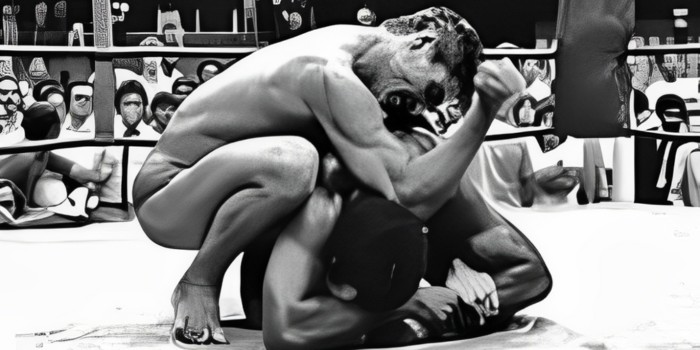Vale Tudo, translated as “anything goes,” is a no-holds-barred combat sport that originated in Brazil. This comprehensive guide will delve into its definition, history, and the controversies that have surrounded it. It is a full-contact combat sport that allows fighters to use a wide range of techniques, including striking, grappling, and submissions. Unlike traditional martial arts tournaments, It has minimal rules, making it one of the most intense and unpredictable combat sports in the world.
History
This sport traces its roots back to Brazil in the early 20th century. It emerged as a way for practitioners of different martial arts to test their skills against each other in real combat situations. Over the years, It has evolved from underground matches to organized events, gaining popularity both in Brazil and around the globe.
Popularity and Controversies
Despite its growing popularity, Val Tudo has also faced its fair share of controversies. Critics argue that the lack of rules and regulations puts fighters at risk of serious injury or even death. Additionally, ethical concerns have been raised about the violent nature of the sport and its impact on participants and spectators alike.

Origin and Development
Brazil: Birthplace of Vale Tudo
Brazil has long been synonymous with martial arts, thanks in part to the country’s rich cultural heritage and diverse population. It was in Brazil that Val Tudo first took shape, drawing inspiration from various fighting styles, including Brazilian jiu-jitsu, muay Thai, and boxing.
The Early Days: Introduction and Spread
In the early days, this sport matches were often held in makeshift arenas or backyards, with little to no regulation. These underground events attracted fighters from all walks of life, eager to prove themselves in the ultimate test of skill and courage. As this sport gained popularity, it began to attract the attention of mainstream media and sports fans worldwide.
The Evolution of Vale Tudo
Over time, It has evolved from its humble beginnings into a more organized and regulated sport. Today, it is governed by various organizations and federations that establish rules and standards for competition. Despite these changes, the essence of It remains the same – a raw and unfiltered display of combat prowess.
Core Components of Tudo Fight

Fighting Styles and Techniques
This sport draws from a wide range of fighting styles, including striking, grappling, and submissions. Fighters are free to use whatever techniques they deem necessary to defeat their opponents, making each match a test of versatility and adaptability.
The Role of Grappling and Ground Fighting
Grappling and ground fighting play a crucial role in it, with many matches ending in submission holds or chokeholds. Fighters must be proficient in both offensive and defensive grappling techniques to succeed in the sport.
Striking Techniques and Their Effectiveness
Striking techniques such as punches, kicks, and elbows are also prevalent in this sport, requiring fighters to possess excellent striking accuracy and power. Unlike traditional boxing or kickboxing, it allows for a wider range of strikes, making it a more dynamic and unpredictable sport.
The Importance of Conditioning and Fitness
Conditioning and fitness are essential aspects of it, as fighters must possess both strength and endurance to endure the rigors of combat. Training regimes typically include a combination of cardiovascular exercise, strength training, and skill development to prepare fighters for the demands of competition.
Rules and Regulations
The original Rule-set
In its early days, it had minimal rules, with fights often continuing until one fighter was unable to continue or was knocked out. However, as the sport gained popularity, organizers began to implement rules to ensure the safety of the fighters and promote fair competition.
Modern Adaptations and Changes
Today, It is governed by a set of rules and regulations established by various organizations and federations. These rules typically dictate the use of protective equipment, prohibited techniques, and scoring criteria, among other things. While the sport remains relatively unrestricted compared to other combat sports, efforts have been made to minimize the risk of injury and ensure a level playing field for all competitors.
Comparison With Other Combat Sports
Val Tudo is often compared to other combat sports such as mixed martial arts (MMA), boxing, and kickboxing. While there are similarities between these sports, Vale Tu do stands out for its emphasis on versatility and adaptability, as fighters are not limited to a specific set of techniques or rules.
Key Figures in Tudo Fight
Famous Fighters and Their Legacies
Over the years, it has produced numerous famous fighters who have left a lasting impact on the sport. From legendary champions to up-and-coming prospects, these fighters have captured the imagination of fans worldwide with their skill, determination, and resilience.
Rising Stars and Future Prospects
As it continues to evolve, new stars are emerging who are pushing the boundaries of the sport and taking it to new heights. With the popularity of the sport growing, the future looks bright for Vale Tu do and the next generation of fighters who will carry on its legacy.
Old Tudo Fights Matches Memories
There are four Vale Tudo fights matches are given below:
Masahiko Kimura Vs. Helio Gracie
This historic bout took place in 1951, pitting Japanese judoka Masahiko Kimura against Brazilian Jiu-Jitsu pioneer Helio Gracie. The match is renowned for Kimura’s victory via a shoulder lock submission known as the “Kimura” – a move that Gracie famously refused to tap out to, resulting in a broken shoulder. This fight showcased the effectiveness of judo techniques against Brazilian Jiu-Jitsu, and it remains a significant moment in martial arts history.
Credit: budoshugyosha
George Gracie Vs. Euclydes Hatem
In another classic Vale Tu do matchup, George Gracie, a member of the legendary Gracie family, faced off against Euclydes Hatem in 1931. This fight is notable for its role in popularizing Brazilian Jiu-Jitsu, as Gracie utilized his ground fighting skills to secure a victory over Hatem, who was a proficient boxer. The match demonstrated the importance of grappling and ground techniques in combat sports and helped establish the Gracie family’s reputation as martial arts pioneers.
Rickson Gracie Vs. Hugo Duarte
Rickson Gracie, widely regarded as one of the greatest Brazilian Jiu-Jitsu practitioners of all time, faced off against Hugo Duarte in a memorable Vale Tu do fight. This bout, which took place in 1988, saw Gracie dominate his opponent with superior grappling and submission skills, ultimately securing a victory via armbar. The fight solidified Gracie’s reputation as an unstoppable force in Vale Tu do and further cemented Brazilian Jiu-Jitsu’s effectiveness in real combat situations.
Credit: JRE Clip
Renzo Gracie Vs. Eugenio Tadeu
Renzo Gracie, a member of the renowned Gracie family and a highly skilled martial artist in his own right, squared off against Eugenio Tadeu in an intense showdown. This fight, held in 1997, showcased Gracie’s well-rounded skill set as he utilized a combination of striking and grappling techniques to overcome his opponent. Despite facing adversity, Gracie emerged victorious, further adding to the legacy of the Gracie family in Tudo fighting and martial arts as a whole.
These four Tudo fights exemplify the rich history and diverse skill sets within the sport. From legendary matchups to iconic victories, each bout has left a lasting impact on the world of martial arts and continues to inspire fighters and fans alike.
Credit: Fighter’s Legacy
The Controversies
Ethical Debates and Criticism
The violent nature of Tudo fight has also sparked ethical debates and criticism, with some questioning the morality of allowing fighters to engage in such brutal combat. While proponents argue that it is a legitimate sport that promotes skill, discipline, and respect, opponents argue that it glorifies violence and puts participants at risk of long-term health issues.
The Future of Vale Tu do in a Changing World
As society continues to evolve, the future of Tudo fight remains uncertain. While the sport has enjoyed growing popularity in recent years, it faces challenges from other combat sports and changing attitudes towards violence in sports. However, with its rich history and dedicated fan base, Tudo is poised to continue thriving in the years to come.
Conclusion
In conclusion, Vale Tudo is a unique and captivating combat sport that has captured the imagination of fans worldwide. From its humble beginnings in Brazil to its status as a global phenomenon, Tudo Fight continues to evolve and adapt to the changing landscape of combat sports. While controversies may continue to surround the sport, its continued relevance and evolution are a testament to its enduring appeal and timeless appeal.
Frequently Asked Question's (FAQ's)
Q: What is the meaning of Vale Tudo?
Ans: It translates to “anything goes” in Portuguese. It’s a combat sport from Brazil where fighters can use a variety of techniques with minimal rules.
Q: When was Vale Tudo invented?
Ans: It originated in Brazil in the early 20th century, evolving from underground matches to organized events.
Q: What is the meaning of Valetudo?
Ans: Valetudo is a variant spelling of Vale Tudo, referring to the same no-holds-barred combat sport.
Q: What is a combat sport with no rules?
Ans: A combat sport with no rules, like Vale Tudo, allows fighters to use any technique to win, resulting in intense and unpredictable matches.


